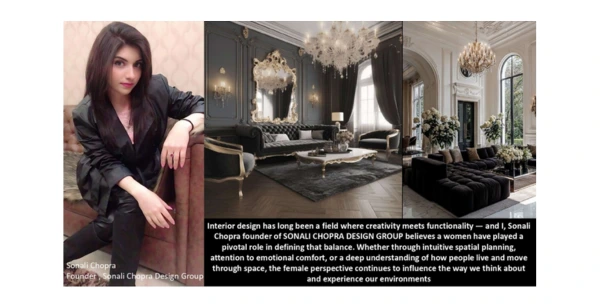
The Female Perspective in Interior Design: Shaping Spaces with Sensitivity and Strength.
A History of Silent Influence
Historically, women were the primary caretakers of the home, shaping domestic spaces long foundation for what would become a respected profession. In the early 20th century, pioneers like Elsie de Wolfe — often considered the first professional interior decorator — began turning domestic intuition into an art and business.
Today, women lead some of the most influential design firms in the world and are reshaping residential, commercial, and even industrial interiors with both artistry and strategy.
What the Female Perspective Brings
1. Human-Centered Design
Women often approach interior design from a deeply human perspective. Rather than focusing solely on aesthetics, they prioritize how a space feels, flows, and functions for its users. This includes:
• Thoughtful circulation patterns
• Multi-functional spaces
• Emotional wellness through texture, lighting, and color
2. Empathy and Emotional Intelligence
Empathy is a powerful design tool. Many women designers are skilled at translating a client’s unspoken needs into tangible elements — whether it’s creating a calming retreat for a stressed professional or designing a child-friendly living space that doesn’t sacrifice elegance.
3. Attention to Detail
Details in interior design are everything — and the female perspective often brings heightened sensitivity to the subtle interactions between form, function, and feeling. This can be seen in:
• Layered lighting concepts
• Balanced use of soft and hard materials
• Incorporating meaningful objects and personal stories into design narratives
4. Cultural and Social Sensitivity
Women often lead in inclusive, sustainable, and culturally sensitive design. They consider diverse needs: from accessibility to gender-neutral restrooms to nurturing spaces that reflect multicultural values.
Women Leading the Way
Modern interior design is rich with female voices shaping the industry. Names like Kelly Wearstler, India Mahdavi, Patricia Urquiola, and Ilse Crawford are not only leading brands — they are redefining design language itself. Their work blends strength, storytelling, and sophistication, each creating spaces that reflect a unique worldview.
Challenges Still Exist
Despite strong representation, women in interior design still face challenges, especially in gaining equal recognition and compensation in larger, male-dominated architecture or construction firms. Female designers often have to prove their technical competence in addition to their aesthetic vision.
Mentorship programs, more leadership opportunities, and recognition of women’s multifaceted contributions are key to building a more balanced and equitable design industry.
Designing the Future
The future of interior design will be shaped by collaboration, sustainability, and inclusion — all values where the female perspective naturally thrives. As homes become hybrid workspaces, and public spaces demand more emotional intelligence, women designers are uniquely equipped to lead.
They are not just decorating rooms — they are designing experiences, shaping culture, and influencing how people feel in the places they live, work, and gather.
Conclusion
I, Sonali Chopra believes that Women bring intuition, innovation, and a sense of humanity to interior design. Their perspective helps bridge the gap between beauty and practicality, creating spaces that don’t just look good but feel like home. As more women rise into leadership roles within the design industry, their impact will only continue to grow — one thoughtful space at a time.




